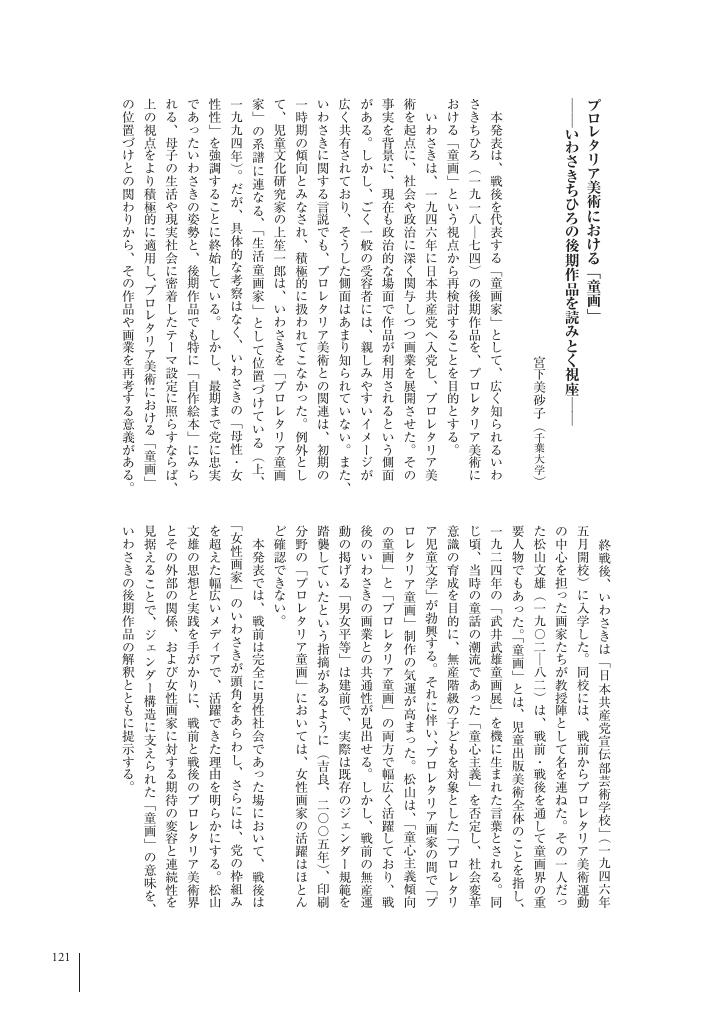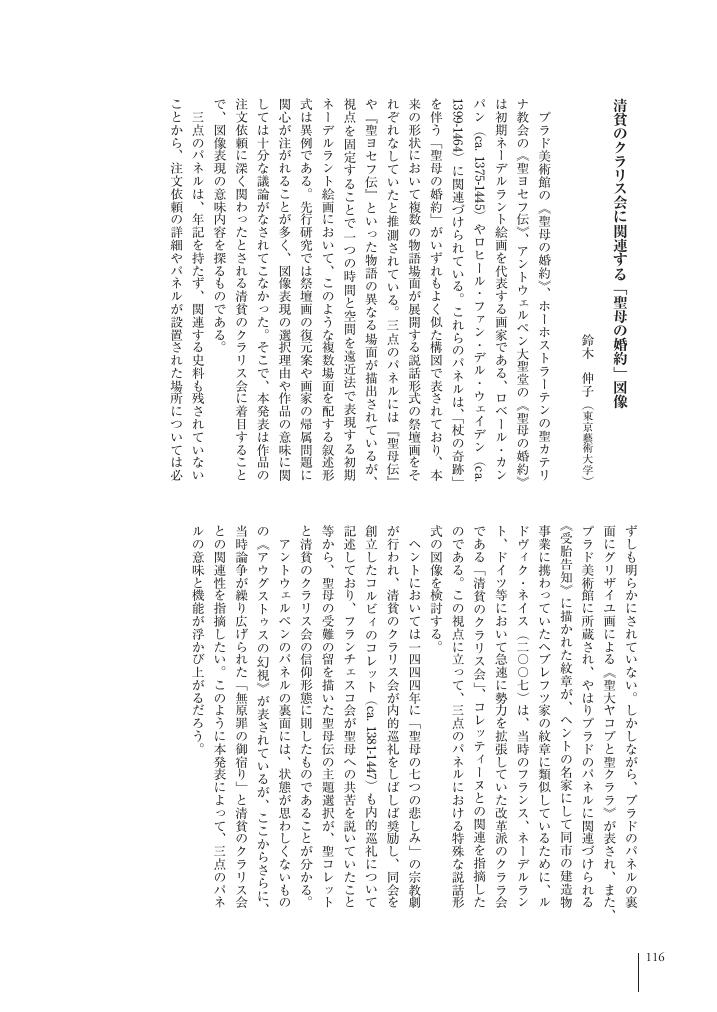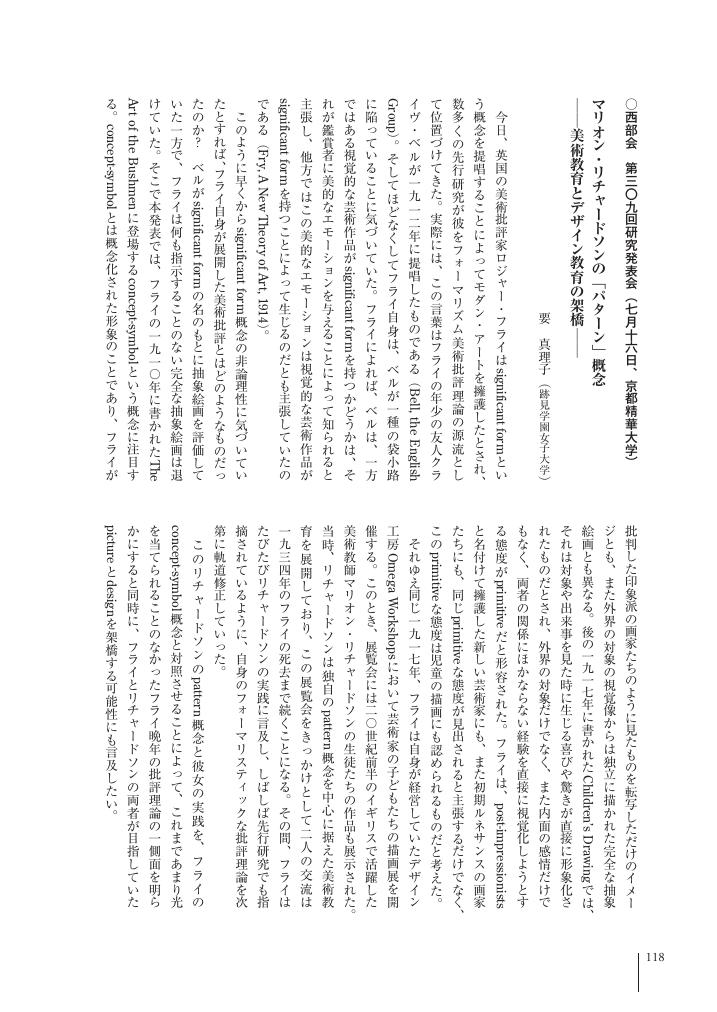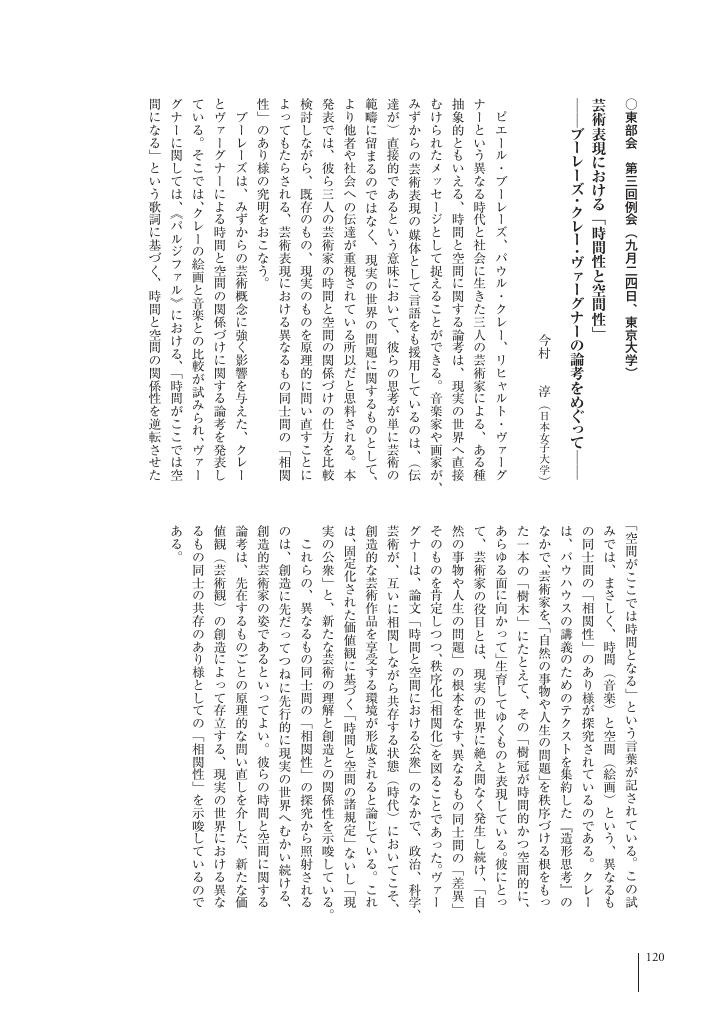1 0 0 0 OA 二次元的人間の予知夢 アドルフ・ヒルデブラント
- 著者
- 金田 千秋
- 出版者
- 美学会
- 雑誌
- 美学 (ISSN:05200962)
- 巻号頁・発行日
- vol.68, no.1, pp.25-36, 2017 (Released:2018-07-01)
I would like to nominate the thoughts of Hermann von Helmholtz, a celebrated German physiologist and mathematician in the nineteenth century, as a framework for interpreting sculptor Adolf Hildebrand’s great work, ‘Das Problem der Form in der bildenden Kunst’ (1893). It can be clearly inferred from Hildebrand’s letters that he had inspected Helmholtz’s popular papar on the non-Euclidean geometry system. The concept of the “plane” in this paper was decisive. Helmholtz’s thinking experiment, “Can an insect with only plane perception crawling on an egg recognize its three-dimensional curved surface?”, probably influenced Hildebrand’s sculpture-aesthetics, which analyzed the shapes of objects with a series of concepts, “face”, “layer”, “face layer”, etc. Helmholtz’s insight that “The world is made of flat surfaces” had thus profoundly affected the sculptor. What kinds of human abilities are needed to perceive the composition of the world? At the end of the eighteenth century, a controversy broke out between Immanuel Kant and the followers of Gottfried Leibniz about whether to lay the foundation of space on “intuition” or “intuition and concept”. However, Hildebrand’s involvement in this history made him confront the conflict between “intuition” and “intuition and concept”, which unexpectedly led to a serious political and racial problem.
- 著者
- 筧 菜奈子
- 出版者
- 美学会
- 雑誌
- 美学 (ISSN:05200962)
- 巻号頁・発行日
- vol.67, no.2, pp.124, 2016 (Released:2018-01-01)
1 0 0 0 OA ヘーゲルの芸術哲学における文化「翻訳」的思索 ゲーテ『西東詩集』受容の再考
- 著者
- 髙藤 大樹
- 出版者
- 美学会
- 雑誌
- 美学 (ISSN:05200962)
- 巻号頁・発行日
- vol.67, no.2, pp.125, 2016 (Released:2018-01-01)
1 0 0 0 OA 趣味判断が誤るとき 『判断力批判』における情感的意識の観点から
- 著者
- 高木 駿
- 出版者
- 美学会
- 雑誌
- 美学 (ISSN:05200962)
- 巻号頁・発行日
- vol.68, no.1, pp.13, 2017 (Released:2018-07-01)
In the First Book of the Critique of the Power of Judgment (1790), judgments of taste which state the beauty are based on a subjctive ground, or the feeling of pleasure, so that they are not logical cognitive judgments which constitute “a cognition of the object through concepts of it” (V 211) but aesthetic judgments. Therefore, they cannot state truth or falsehood of themselves as logical cognitive judgments do. However, Kant uses the expression of “a false (or an erroneous) judgment of taste (ein irriges Geschmacksurteil)” (V 216). If this “false (or erroneous)” is not logical one, what does it mean? About what are judgments of taste false? Now, we have three leading interpretations of judgments of taste to resolve these questions, i.e. interpretation from an epistemological, moral, aesthetic point of view. But I think that the first two interpretations are not successful, because they contradict Kant’s statements in some points as I will show. Thus, in this paper by adopting the aesthetic interpretation of judgments of taste I shall answer the questions concerned, namely argue that the falsehood (or error) of them consists in choosing an inappropriate feeling of pleasure for the ground of judgments of taste.
1 0 0 0 OA プロレタリア美術における「童画」 いわさきひちろの後期作品を読みとく視座
- 著者
- 宮下 美砂子
- 出版者
- 美学会
- 雑誌
- 美学 (ISSN:05200962)
- 巻号頁・発行日
- vol.67, no.2, pp.121, 2016 (Released:2018-01-01)
1 0 0 0 OA ピランデッロと初期映画
- 著者
- 岡田 温司
- 出版者
- 美学会
- 雑誌
- 美学 (ISSN:05200962)
- 巻号頁・発行日
- vol.67, no.2, pp.119, 2016 (Released:2018-01-01)
1 0 0 0 OA 清貧のクラリス会に関連する「聖母の婚約」図像
- 著者
- 鈴木 伸子
- 出版者
- 美学会
- 雑誌
- 美学 (ISSN:05200962)
- 巻号頁・発行日
- vol.67, no.2, pp.116, 2016 (Released:2018-01-01)
1 0 0 0 OA 「触常者」の美学仮説 ユニバーサル・ミュージアムの理論のために
- 著者
- 篠原 聰
- 出版者
- 美学会
- 雑誌
- 美学 (ISSN:05200962)
- 巻号頁・発行日
- vol.67, no.2, pp.117, 2016 (Released:2018-01-01)
1 0 0 0 OA ゴードン・マッタ=クラークの初期作品と「エコロジー」
- 著者
- 平野 千枝子
- 出版者
- 美学会
- 雑誌
- 美学 (ISSN:05200962)
- 巻号頁・発行日
- vol.67, no.2, pp.122, 2016 (Released:2018-01-01)
- 著者
- 上田 恒夫
- 出版者
- 美学会
- 雑誌
- 美学 (ISSN:05200962)
- 巻号頁・発行日
- vol.67, no.2, pp.123, 2016 (Released:2018-01-01)
1 0 0 0 OA マリオン・リチャードソンの「パターン」概念 美術教育とデザイン教育の架橋
- 著者
- 要 真理子
- 出版者
- 美学会
- 雑誌
- 美学 (ISSN:05200962)
- 巻号頁・発行日
- vol.67, no.2, pp.118, 2016 (Released:2018-01-01)
1 0 0 0 OA 芸術表現における「時間性と空間性」 ブーレーズ・クレー・ヴァーグナーの論考をめぐって
- 著者
- 今村 淳
- 出版者
- 美学会
- 雑誌
- 美学 (ISSN:05200962)
- 巻号頁・発行日
- vol.67, no.2, pp.120, 2016 (Released:2018-01-01)
1 0 0 0 OA 〈パリのアメリカ人〉と〈孤島のロビンソン〉 カント美学と文明化の過程
- 著者
- 小田部 胤久
- 出版者
- 美学会
- 雑誌
- 美学 (ISSN:05200962)
- 巻号頁・発行日
- vol.67, no.2, pp.114, 2016 (Released:2018-01-01)
1 0 0 0 OA ベルクソン『創造的進化』における「共感」の概念
- 著者
- 持地 秀紀
- 出版者
- 美学会
- 雑誌
- 美学 (ISSN:05200962)
- 巻号頁・発行日
- vol.67, no.2, pp.113, 2016 (Released:2018-01-01)
1 0 0 0 OA 「JAPAN牛窓国際芸術祭」再考 八〇年代、日本における野外美術展の変質とその文脈
- 著者
- 山下 晃平
- 出版者
- 美学会
- 雑誌
- 美学 (ISSN:05200962)
- 巻号頁・発行日
- vol.67, no.2, pp.112, 2016 (Released:2018-01-01)
1 0 0 0 OA ティツィアーノ作《マリアの神殿奉献》に関する一考察 ヴェネツィア、マリア、カリタ(慈愛)
- 著者
- 森本 奈緒美
- 出版者
- 美学会
- 雑誌
- 美学 (ISSN:05200962)
- 巻号頁・発行日
- vol.67, no.2, pp.105, 2016 (Released:2018-01-01)
- 著者
- 桑原 夏子
- 出版者
- 美学会
- 雑誌
- 美学 (ISSN:05200962)
- 巻号頁・発行日
- vol.67, no.2, pp.108, 2016 (Released:2018-01-01)
- 著者
- 吉村 真
- 出版者
- 美学会
- 雑誌
- 美学 (ISSN:05200962)
- 巻号頁・発行日
- vol.67, no.2, pp.107, 2016 (Released:2018-01-01)
- 著者
- 瀧川 美生
- 出版者
- 美学会
- 雑誌
- 美学 (ISSN:05200962)
- 巻号頁・発行日
- vol.67, no.2, pp.115, 2016 (Released:2018-01-01)
1 0 0 0 OA 「中国」の美学(Chinese Aesthetics)の成立における日本の影響
- 著者
- 楊 冰
- 出版者
- 美学会
- 雑誌
- 美学 (ISSN:05200962)
- 巻号頁・発行日
- vol.67, no.2, pp.106, 2016 (Released:2018-01-01)

















